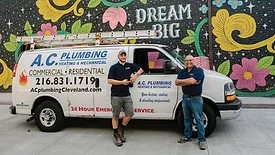Home » Keywords: » retrofit
Items Tagged with 'retrofit'
ARTICLES
A RIDGID RP 350 testimonial.
Read More
$25.8 million rehabilitation and electrification of The Senate residence in Manhattan reaches half-way milestone
Upon completion in 2026, the project will create the first fully electrified SRO supportive housing property in New York City.
August 19, 2025
Heating Perceptions | Scott Secor
Old home needs entirely new heating system; is it worth it?
Exploded radiators
March 10, 2025
Heating Perceptions | Scott Secor
Young people do want to work
Don’t judge everyone based on stereotypes.
February 3, 2025
Heating Perceptions | Scott Secor
Low-pressure steam boiler piping gets much-needed replacement
71-year-old piping failure at an apartment complex resulted in many challenges.
January 8, 2025
Heating Perceptions | Scott Secor
In hot water: A DHW logistical predicament
A local hotel’s domestic hot water system repairs calls for creative problem-solving.
December 5, 2024
Above-floor plumbing simplifies garage conversion to an in-law suite
Mechanical contractor opts for cost-effective, easy to install Saniflo solution.
April 22, 2024
New Products & Literature
ZURN ELKAY WATER SOLUTIONS: Flush sensor retrofit kit
July 14, 2023
Dave Yates: Heat pump retrofit
Take advantage of government incentives and rebate programs.
June 6, 2023
Keep your content unclogged with our newsletters!
Stay in the know on the latest plumbing & piping industry trends.
JOIN TODAY!Copyright ©2025. All Rights Reserved BNP Media.
Design, CMS, Hosting & Web Development :: ePublishing












